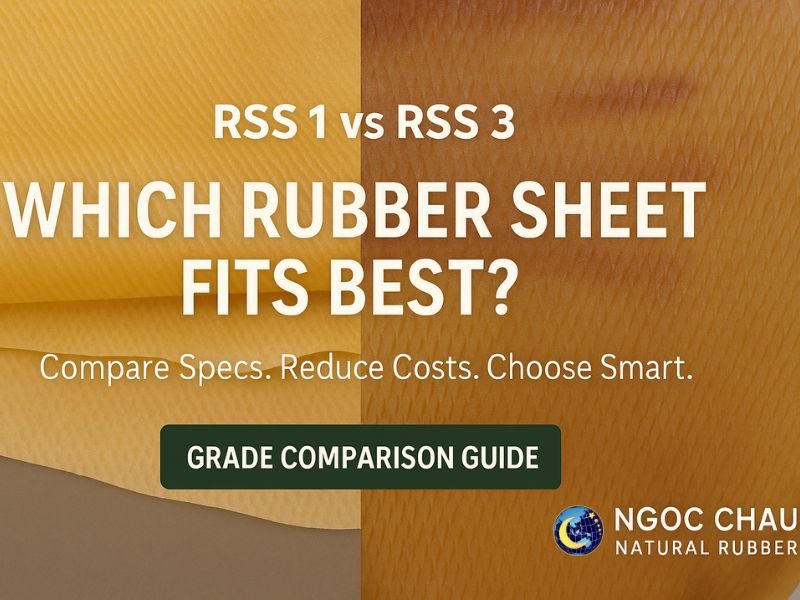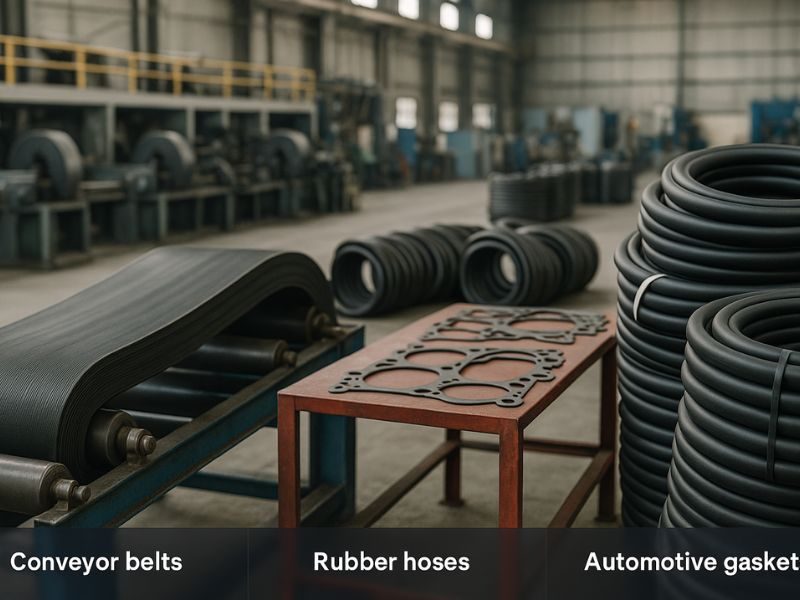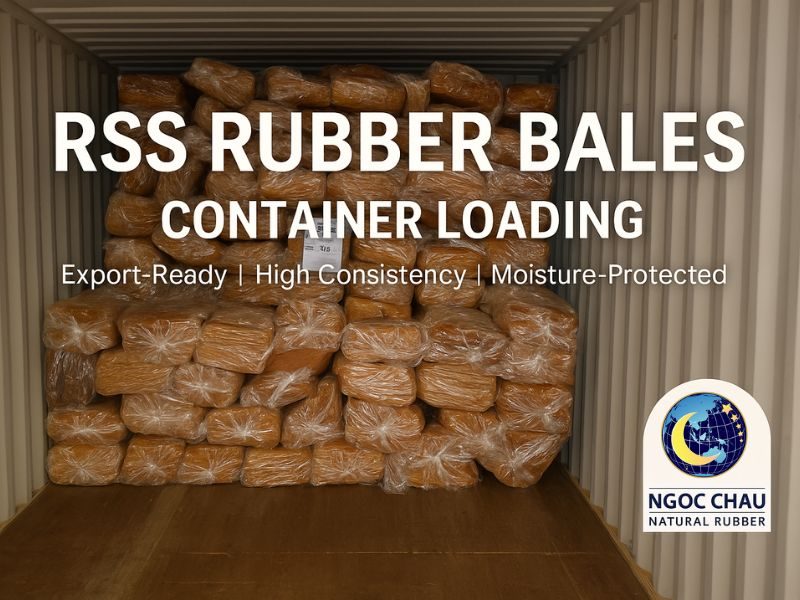Contents
RSS 1 vs RSS 3: Choosing the right grade of natural rubber is critical to the performance, durability, and cost-effectiveness of your final product. In the rubber industry, these two grades are among the most commonly used—but which one fits your specific application?
In this guide, Ngoc Chau Natural Rubber—a trusted supplier of both RSS 1 vs RSS 3—compares the two grades in detail. Our goal is to help technical buyers and product developers make informed sourcing decisions based on quality, specifications, and real-world use.
What Are RSS 1 vs RSS 3?
Both RSS 1 and RSS 3 belong to the Ribbed Smoked Sheet (RSS) family—natural rubber sheets produced by coagulating latex, pressing it into ribbed form, and drying it in smokehouses. Their numbering reflects grade, not thickness:
-
RSS 1 is a higher-grade sheet rubber with minimal impurities and a lighter, more uniform color.
-
RSS 3 is slightly lower in purity and visual clarity, but still widely accepted for industrial and commercial uses.
Both grades are used globally and comply with standards like ISO 2000:2014 and TCVN 3769:2016.
Key Technical Differences Between RSS 1 vs RSS 3
Let’s break down the differences that matter for manufacturing:
| Specification | RSS 1 | RSS 3 |
| Dirt Content | ≤ 0.05% | ≤ 0.10% |
| Ash Content | ≤ 0.75% | ≤ 1.00% |
| Color | Pale amber, uniform | Brown, slight variation |
| PRI (Plasticity Retention Index) | Higher (90–95) | Moderate (85–90) |
| Visual Inspection | Minimal blemishes | Minor specks allowed |
| Price per MT | Higher | More cost-effective |
In short: RSS 1 is purer and more uniform, while RSS 3 offers functional performance at a better price.
Application Suitability: Which Grade for Which Product?
Choosing between RSS 1 vs RSS 3 depends on your end product requirements, tolerance for impurities, and budget.
🛞 Tires (Passenger, Motorcycle, Off-Road)
-
Recommended: RSS 3
-
Why: Excellent elasticity and abrasion resistance; cost-effective for high-volume production.
🧰 Gaskets, Seals, Shock Pads
-
Recommended: RSS 1 (if used in high-pressure/precision applications)
-
Why: Fewer impurities help avoid performance failures under compression.
🥿 Rubber Soles, Footwear, Mats
-
Recommended: RSS 3
-
Why: Cost-effective with adequate performance for consumer-grade goods.
Cost, Availability & Supply Considerations
-
RSS 1 is more expensive due to stricter quality control and sorting during production.
-
RSS 3 is more abundant and flexible in supply for industrial markets.
-
Both are available from Ngoc Chau Natural Rubber in bale and pallet formats, optimized for 20DC containers.
| Packaging Type | Quantity per Unit | Total Units | Total Weight (MTs) | Container Type |
| BALE | 33.33 kgs/Bale | 600 to 630 bales | 20 to 21 MTs | 20 DC |
| 35 kgs/Bale | 600 to 630 bales | 21 to 22.05 MTs | 20 DC | |
| PALLET | 33.33 kgs/Bale; 36 Bales/1.2MTs/Pallet | 16 pallets | 19.2 MTs | 20 DC |
| 35 kgs/Bale; 36 Bales/1.26MTs/Pallet | 16 pallets | 20.16 MTs | 20 DC |
Ngoc Chau offers export-ready support with COA, TDS, MSDS, C/O, and fumigation documentation.
How to Choose the Right Grade for Your Factory
Here’s a quick checklist:
| If You Need… | Choose |
| Highest purity and visual uniformity | RSS 1 |
| Cost savings with acceptable industrial performance | RSS 3 |
| Rubber for tire manufacturing | RSS 3 |
| Rubber for high-end vibration isolators or precision parts | RSS 1 |
| Rubber for shoes, flooring, or molded consumer parts | RSS 3 |
Need both? Ngoc Chau supports dual-grade sourcing to help optimize your cost-performance mix.
Conclusion: Match the Grade to the Job
In the comparison of RSS 1 vs RSS 3, there’s no “better”—only the better fit for your product.
-
RSS 1 offers premium purity, ideal for precision technical goods.
-
RSS 3 is cost-effective and performs excellently in tires, mats, belts, and general industrial products.
💬 Still not sure which one you need? Our team at Ngoc Chau Natural Rubber will help you evaluate, sample, and source the right grade—reliably and at scale.
❓FAQs
Q: Can I use RSS 3 instead of RSS 1?
Yes, if your product can tolerate slightly higher impurity levels without affecting performance.
Q: Is RSS 1 always better?
Not necessarily—unless your application requires extremely low ash/dirt content.
Q: Do both grades come with ISO certification?
Yes, Ngoc Chau provides ISO-compliant supply for both RSS 1 and RSS 3.












 Ms Evan
Ms Evan